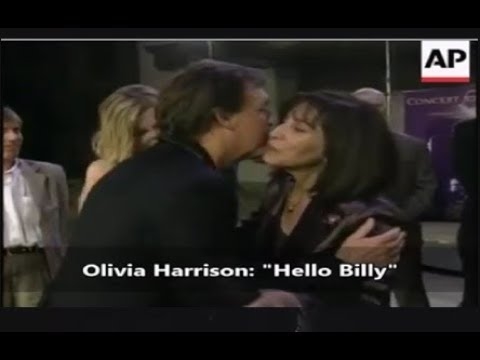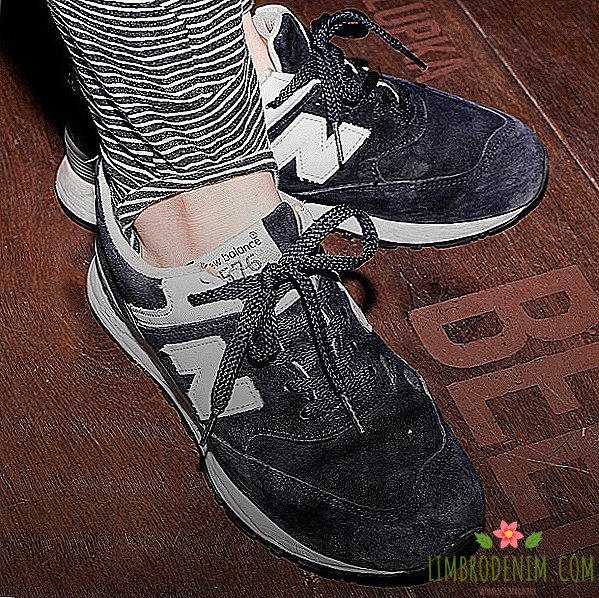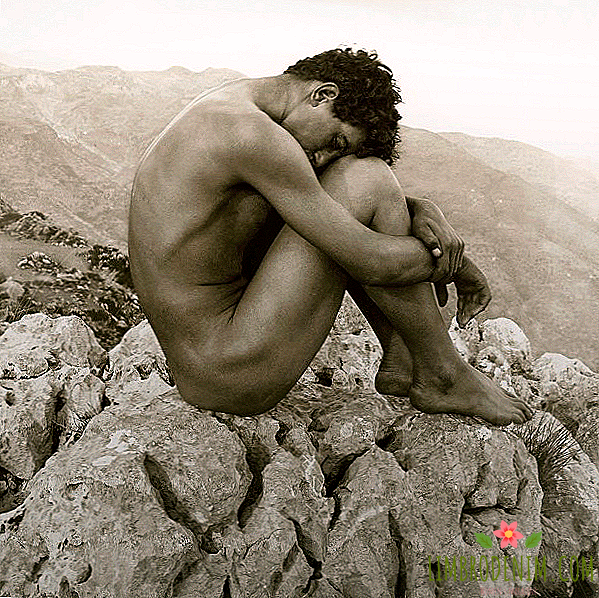8 films by which you can learn the fashion of the 70s
Last season designersIt seems they managed to remember all the epochs in a row - the 70s as well. Some of the characteristic things of the time almost never left the runways: flared jeans, wool vests, suede boots, and sand trench coats. And although few people quote the decade literally, some, like the editor of AnOther Magazine, Ben Cobb, do it perfectly well. To study the fashion of the 70s can be primarily on the film "Taxi Driver" and the first two parts of "Godfather". We talk about a few more pictures that define the spirit of the time.
Text: Anna Eliseeva

Kramer vs. Kramer
1979

"Kramer vs. Kramer" was not by chance one of the most iconic films of the 70s. Women's emancipation made us think about the redistribution of typical roles of men and women, which formed the basis of the plot. Housewife Joanna decides to leave the family, leaving the child in the care of the busy spouse Ted, to find a vocation outside of motherhood. Meryl Streep admitted that she would not have taken on the role if she had not been allowed to make edits so that Joanna would not appear as an unambiguous villain in the eyes of her husband, son and public.
Joanna keeps a strict order in her wardrobe - she chooses discreet skirts, flawless blouses and shirts, all buttoned up. Ted, preoccupied with a career, is dressed only in the office, changing his strict three-piece suits to plain flared trousers, worn polos and denim shirts at home. The more time he spends with his son, the more obvious is the similarity of their clothes: they both wear casual coats, flared jeans, beige trousers, shirts and sweatshirts.
It seems that the only thing Joanna and Ted have in common is in love for trench coats. Costume designer Ruth Morley, also known as the work on "Annie Hall", deliberately unites the characters with a neutral thing, forcing them to look at them as equals. Blame everyone and no one, and both deserve compassion.





Dirty Harry
1971

It is noteworthy that in this film there are almost no female characters, and those that exist appear only in short episodes as victims. The film itself is not deprived of the spirit of freedom inspired by the beginning of the sexual revolution in the 60s: the heroines often appear naked, and men clearly flirt with each other.
Looking at the style of the film’s heroes, it’s hard to believe that it was filmed almost half a century ago. On the one hand, all the fashionable signs of the 70s are selected in it: the heroes and casual passersby wear bright ponchos, corduroy sets, flared trousers, velvet coats and soft hats. On the other hand, the costume of the main character looks as modern as if it had been copied from recent shows.
We know almost nothing about the police inspector nicknamed Dirty Harry, but the way he looks immediately attracts attention. Even on the most unsightly tasks, he wears flawless tweed suits, white shirts and polished boots, and Ray-Ban Balorama impermeable glasses complement this look.

Play it again, Sam!
1972

It’s hard not to mention films featuring Woody Allen in the 70s style reviews. Above, "Play it again, Sam!" Anna Hill Johnston worked, including the heroes of other cult films: "The Godfather" and "Serpico". The dresser seems to have used all the characteristic things of the 70s, which today can be found at Gucci shows and in the latest Celine collection.
Film critic Allan, who is abandoned by his wife, is not used to thinking about clothes - he appears almost everywhere in worn trousers, T-shirts and a baggy cardigan. He is not at all like another hero - Humphrey Bogart, whose ghost in a classic trench coat and hat from time to time gives advice on relationships. Allen puts on suits and shirts only on dates, but to no avail - excessive excitement and attempts to pretend to be someone else only repel companions.
He does not look like his friends Linda and Dick, whose outfits shout about respectability. Linda wears jackets in a goose foot on the figure, sweaters with a pattern, various hats, plain shirts, flared skirts; there is in her wardrobe and a vest made in fashionable crochet technique. Dick is not met without a tweed suit in a cage or a Christmas tree and a wide tie. But here, too, clothing serves as a visual snag: behind the immaculate appearance lies the cooled feelings of the spouses and the imminent crisis of marriage.





Three days condor
1975

The film Sydney Pollack is considered not only an exemplary political thriller, but also an example of an unsurpassed style in the movie. CIA agent Joe Turner performs atypical spy work — reads books to find encrypted information and secret codes. He comes to work in ordinary flared jeans, a blue shirt, worn under a dark jumper, herringbone jacket and leather gloves. Costume designer Joseph J. Olice decided to add an unusual detail to the image of the main character - trekking boots that give everyday outfits and hint at Joe's ordinary position. He stands out except that the transparent "aviators" Ray-Ban.
But while the protagonist casually relates to his appearance, the CIA leadership and the private killer follow the perfect order. They wear immaculately ironed shirts, straight trench coats, a fur-lined coat, and wool vests. It is precisely with their emasculated appearance that they arouse suspicion in Joe. The heroines are also dressed in the fashion of those times: the character Faye Dunaway, for example, chooses simple turtlenecks and a cream coat, and the employee of the department Joe has a yellow shirt and loose pants, completing the image with large oval glasses in the spirit of Alessandro Michele's collections for Gucci.

Clute
1971

The iconic picture of Alan Pakula stands alone among the many thrillers of the 70s. The main character, for whose role Jane Fonda received an Oscar, at first glance seems like an ordinary woman: she goes to model castings and acting auditions, and in the evenings she spends her time enjoying a glass of wine and a book. Contrary to stereotypes, Daniel Bree’s style doesn’t betray a sex worker in her. She wears the characteristic things of the time: knit tops and thick sweaters with a throat, A-silhouette skirts and knee-high boots, turtlenecks in combination with a velvet jacket and sundresses with Victorian blouses, sometimes adding a large pendant on a long chain. According to Jane Fonda, all things belonged to the actress herself.
Brie does not seek to hide behind clothes, because he is not shy about his profession. On the contrary, in her conversations with the psychotherapist we recognize the heroine as a more complex, vulnerable and at the same time self-sufficient person. She is aware of her sexuality and seeks control, which reflects her wardrobe.





Annie Hall
1977

Another tape that reflected changing ideas about the role of men and women in the 70s. Needless to say that this film most often appears in various lists of the "most stylish." From the very beginning, the heroine Annie is an extraordinary free person, who skillfully emphasizes her wardrobe. Perhaps the most recognizable image is with baggy “men's” trousers, a strict shirt, vest and wide tie. Some models for Annie provided Ralph Loren - many later he will take her images as the basis for the collection autumn-winter 2016.
Despite the fact that she worked on the film including the costume designer Ruth Morley, Diane Keaton had complete freedom in choosing clothes. Restrained androgynous outfits that belonged to the actress herself, approved the right of women to dress as they like. Christmas tree jackets, silk scarves, printed cardigans, knee-length leather boots and horn-rimmed glasses are other recognizable elements of the 70s style, without which the ribbon could not have done.

Saturday evening fever
1977

The disco spirit can be seen in the film from the very first seconds: under the cult song "Stayin 'Alive" by Bee Gees by twenty-three-year-old John Travolta in leather leather jacket, flared trousers and low-heeled shoes walking around New York, incidentally peering into a store with patchy shirts. A consultant in the shop, on Saturdays, Tony Manero becomes the star of the dance club, and devotes all his free time to rehearsals for new dances. He usually wears a bright red shirt and blue polo with a wide collar, and he wears a pink polyester suit for dancing.
In everyday outfit Tony looks defiant and boldly compared with others. Even with her partner, Stephanie, who holds herself haughtily, the main character has nothing in common. A novice public relations manager, she seeks to dress elegantly: white blouses, light-colored pants, cream coats and tweed caps. For the final performance, Tony chooses an atypical white set that should symbolize changes in life. Stephanie also performs in a flying dress in the Greek style, which does not correspond to the atmosphere of the kitsch club.





Laura Mars Eyes
1978

The story of fashion photographer Laura Mars, who became famous for her provocative pictures with semi-nude models and scenes of violence. Hero Faye Dunaway defends her concept, but suddenly she herself begins to suffer from terrible visions of the murders of the people around her. At the beginning of the film, Laura appears strong and confident: on her own exhibition in a closed dress with a throat and bows in her hair, she looks really handsome.
Laura's style looks modern by the standards of both the 70s and today: ponchos, skirts with side slits, silk blouses, knee-length suede boots, a trendy hat-helmet, checkered jackets and much more constitute her wardrobe. Men are not far behind, choosing knitted cardigans, spectacular blousons, inflated vests and soft jackets, over which they wear white scarves.
Photo: Columbia Pictures Industries, Warner Bros., Paramount Pictures, MGM, United Artists





